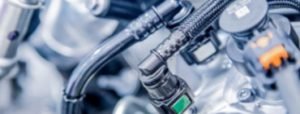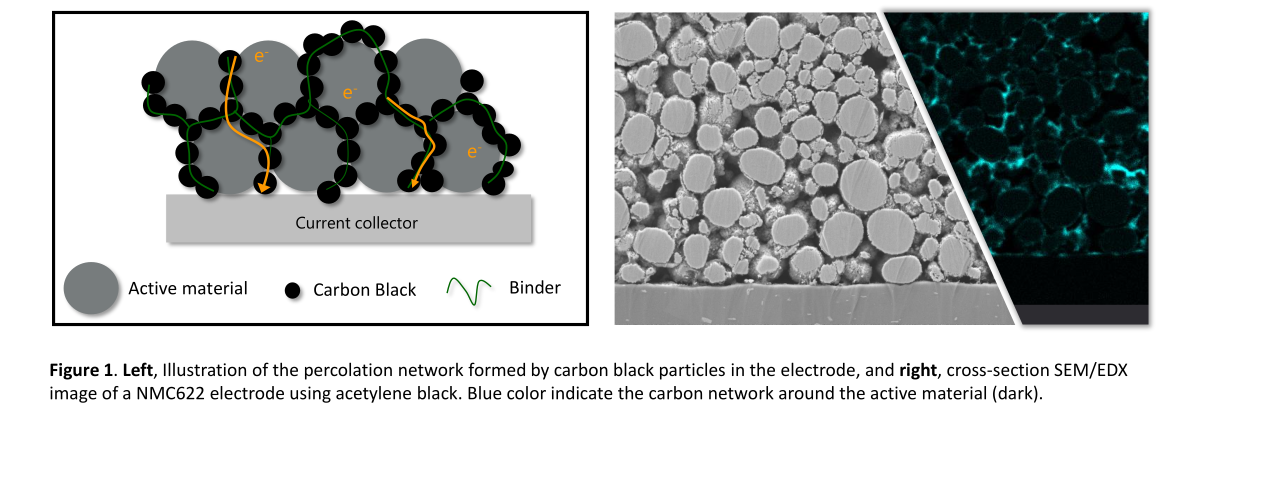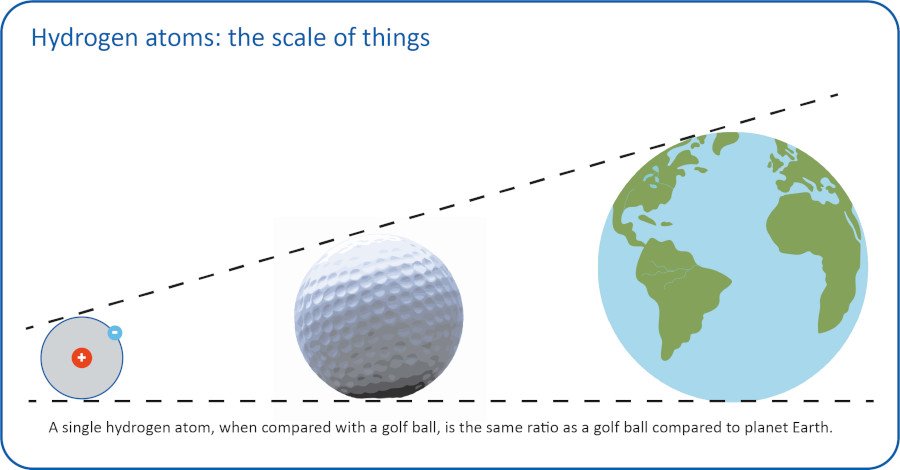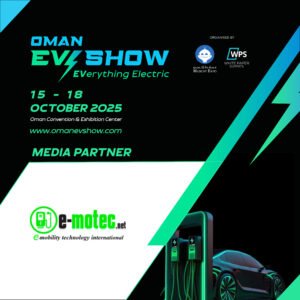With the continued growth in popularity of hybrid and electric vehicles, it is now clear that E-mobility is much more than just a trend. As the transformation of how we drive and travel is completed, it will be rare to find a vehicle that is not in this category.
The effects of this transformation trickle down to affect Thermal Management system designs and integration, which creates challenges that have direct consequences on fastening and assembly. The transition towards Hybrid Electric Vehicles (HEV) and Battery Electric Vehicles (BEV) adds complexities to these systems, which are required for temperature regulation of batteries, E-motors, power electronics and other sub-systems.
Thermal regulation is indeed critical to the performance of these types of vehicles, affecting both vehicle range and battery lifespan, as well as enabling fast charging which will be key to future EV requirements. Most Thermal Management systems rely on either air or fluid circulation through pumps, valves, and several heating or cooling lines. Integrating these lines during the vehicle design phase, and enabling efficient vehicle assembly, are challenges that must be carefully considered for any EV project.
SYSTEM IMPLICATIONS
When building the latest hybrid and electric vehicles, automakers are realizing that more subsystems now must rely on thermal regulation (heating and/or cooling) than in the past in order to achieve the required performance level, and the trends make it clear that more focus must be given to Thermal Management systems when vehicles are designed and assembled.
To put it in perspective, a traditional ICE vehicle typically has between 5 and 7 cooling lines, while an HEV or BEV vehicle can have up to 30 or more, depending on how the battery pack is designed.
A key component of Thermal Management systems is Quick Connectors (QCs). QCs are a popular solution to assemble these lines during vehicle integration and help to enable both efficient and safe connections. The result is that the more lines a vehicle has, the more QCs are needed to keep it safe and effective.
By definition, more fluid lines mean more connections must be made with the large diameter Quick Connectors (QCs) that are typically used for these applications.
Now consider the installation of these QCs during vehicle assembly. The insertion effort required to achieve all these connections quickly adds up to several tons of manual pressure per day, and per operator. This creates risks of musculoskeletal disorders for workers, so improving ergonomics is paramount for QCs used in these applications.
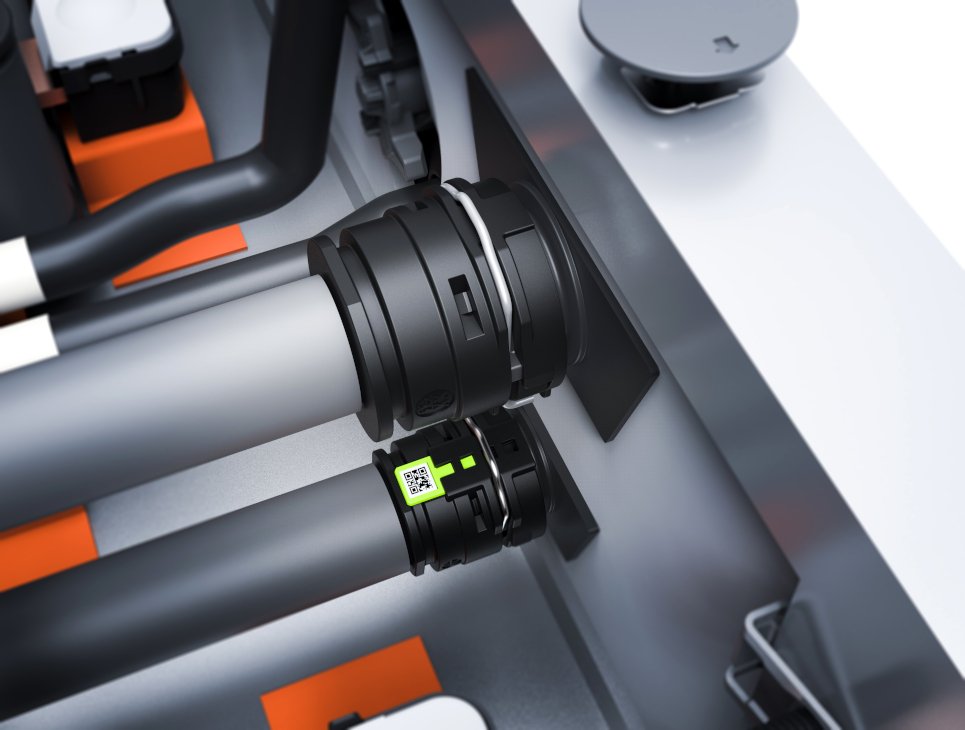 Moreover, every cubic inch counts, as high density is required to offer the best possible vehicle performance. Higher system density indeed leaves more room for energy storage in EV battery packs, which means longer range. High complexity and density are especially critical in Hybrid cars, where all electric drive components must coexist with an ICE engine and its related components — including fuel lines, filters and fuel tank.
Moreover, every cubic inch counts, as high density is required to offer the best possible vehicle performance. Higher system density indeed leaves more room for energy storage in EV battery packs, which means longer range. High complexity and density are especially critical in Hybrid cars, where all electric drive components must coexist with an ICE engine and its related components — including fuel lines, filters and fuel tank.
Fluid line connections in these complex environments can be particularly challenging to make and verify. However, reliable connections are critical, since any leakage caused by mis- assembly would generate significant safety threats, something that automakers want to avoid. The engineers know that the most efficient way to mitigate this is by paying close attention to the selecting of appropriate Quick Connectors.
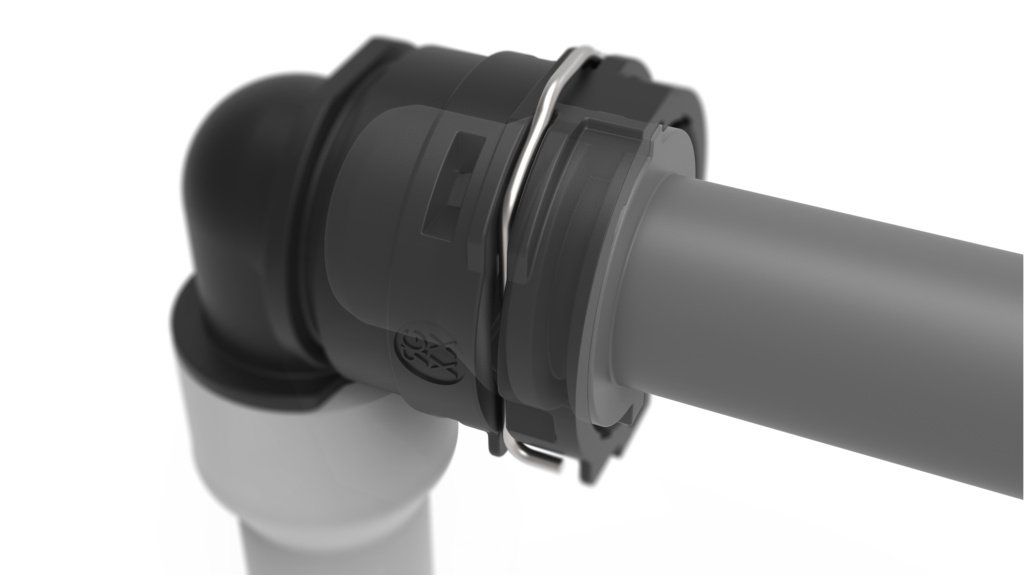
NEW CONNECTOR TECHNOLOGIES SOLVING CHALLENGES
Current advances in Quick Connectors lead to enhanced safety standards, as well as an improved integration and production process.
For manufacturers, an effective way to improve working conditions and worker safety is to select optimized QC designs with reduced insertion efforts. This makes fluid line connections easier on the assembly line, which also means more reliable.
Moreover, since ensuring effective fluid line connections is critical to operational safety, today’s advanced QCs also offer safety features such as assembly verifiers enabling operators or automatic systems to confirm that a proper connection has been made which mitigates risk of mis-assemblies.
This reduces non-quality costs and risks, and brings added peace of mind to the integrator, knowing that all systems were manufactured in the safest possible manner, limiting the possibility of a vehicle failure or of any costly recall.
At ARaymond, our engineers have been involved in this segment for many years, and are regularly updating our solutions to match the market demands.
Building on 10 years of experience designing and manufacturing Quick Connectors complying with the VDA standard, our latest solution is a new generation of VDA LOW PUSH Quick Connectors with an optimized design aiming to alleviate current challenges of Thermal Management Systems integration and assembly.
The design of the new QCs leads the way in terms of how the industry adapts to the vehicles of the future. These QCs have been meticulously improved to reduce the insertion effort required to achieve connection. More specifically, we estimate that the diameter NW16 VDA LOW PUSH QC reduces this insertion effort by at least 40% versus industry standards. Larger diameter QCs will display even greater benefits.
These improved figures will be critical to enhancing ergonomics and will help to facilitate the assembly of thermal management lines in complex environments.
In addition, the innovation features an optional VERIFIER tab that only becomes visible when the end piece is correctly inserted into the Quick Connector and displays a customizable QR code which can be easily detected and read. This feature enables fast and automated quality controls, boosting safety for workers and end-users, and is something that companies should be looking for as they modernize their manufacturing processes for Industry 4.0.
CUSTOMIZATION IS CRUCIAL
Auto suppliers and OEMs know that thermal line integration can be a major challenge in the complex systems offered in today’s high-tech vehicles. That is why a variety of options are necessary. QCs cannot just fit one category — there needs to be a variety of diameters, angles and shapes to fit every possible scenario for every possible customer need. And so engineers must work closely with vehicle integrators when crafting the newest, most modern QCs.
Also customization opportunities via adding fluid management elements such as valves or sensors, must be available wherever needed.
This need for customizability is an essential that we take seriously and build into all our connectors This idea is foremost in the minds of our engineers as they design the next generation of Thermal Management Systems. Moreover, since most current automotive projects are deployed on a global scale, with vehicle production distributed to many assembly plants, we can deliver our latest innovations everywhere in the world with local manufacturing and engineering support.
As E-mobility continues to grow and HEV and BEV vehicles become the standard, the design and manufacturing process in relation to Quick Connectors for Thermal Management systems must continue to adapt to this new reality. The benefits to the end user will translate to longer vehicle range and more reliable vehicles. On the production side, these advances are leading to safer environments for workers by limiting the insertion effort required for QCs, which is essential since there are so many more QCs to install on hybrid and electric vehicles. New QC solutions should be customizable, easy to use, and feature cutting-edge technology that ensures vehicle safety, as there is no room for error when it comes to these critical vehicle systems.
by Sébastien Frasse-Sombet, Senior Global Product Manager chez ARaymond Network

